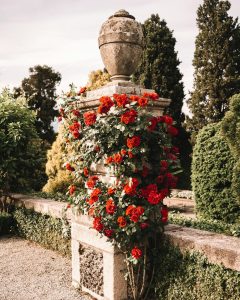Creating a Beautiful Urn Garden: Ideas and Inspiration

Creating an urn garden can transform your outdoor space into a captivating retreat that reflects your personal style. By thoughtfully selecting the right urns and plants, you can design a visually stunning arrangement that provides both beauty and serenity. Whether you prefer modern minimalism or a more traditional aesthetic, the possibilities are endless. In this post, we’ll explore various design ideas, plant selections, and maintenance tips to help you cultivate a thriving urn garden that flourishes throughout the seasons.
- Choosing the Right Urns for Your Garden
- Design Ideas for Arranging Urns
- Selecting Plants That Thrive in urn Gardens
- Recommended Plant Choices
- Incorporating Color and Texture
- Maintaining Your urn Garden for Longevity
- Frequently Asked Questions
- What types of urns are best for creating a garden centerpiece?
- How do I care for the plants in my urn garden?
- Can I use my urn garden indoors as well as outdoors?
- What are some unique design ideas for arranging plants in urns?
Choosing the Right Urns for Your Garden
Selecting the perfect urns is crucial when designing your urn garden. Consider the following factors to ensure you make the best choices:
- Material: Choose from materials like clay, resin, or stone. Each offers unique aesthetics and durability.
- Clay: Traditional look but can crack in freezing temperatures.
- Resin: Lightweight and versatile, often mimicking other materials.
- Stone: Durable and sturdy, perfect for a timeless style.
- Size and Scale: Urns come in various sizes. Ensure they fit well within your garden space:
- Small Urns: Ideal for intimate spaces or clustered arrangements.
- Large Urns: Create a focal point and can anchor larger plantings.
- Style: Match urn designs with existing garden themes:
- Classic: Ornate details suit formal gardens.
- Modern: Sleek, clean lines enhance contemporary settings.
By carefully choosing the right urns for your urn garden, you enhance not only its beauty but also its overall coherence. Always consider how each urn complements your selected plants, heightening the visual appeal of your garden oasis.

Design Ideas for Arranging Urns
Arranging urns in your garden can create stunning focal points and add a touch of elegance. To help you design the perfect urn garden, consider the following ideas:
- Layering Heights: Place urns of varying heights together. Taller urns can anchor the arrangement, while shorter ones fill in the space. This creates visual interest and depth.
- Grouping: Cluster urns in groups of three or five. Odd numbers often feel more natural and balanced. Mix sizes and shapes for an eclectic look.
- Symmetry vs. Asymmetry: Decide on a symmetrical arrangement for a formal feel or an asymmetrical layout for a more relaxed vibe. This choice influences the overall atmosphere of your urn garden.
- Pathways and Borders: Line pathways with urns to guide visitors through your garden. Alternatively, use urns as borders to define different sections of your space.
- Elevating Urns: Use pedestals or steps to elevate some urns. Elevated urns can draw attention, making them stand out amid lower plantings.
By implementing these design ideas, your urn garden will surely become a captivating highlight of your outdoor space.
Selecting Plants That Thrive in urn Gardens
Creating a thriving urn garden hinges on choosing plants that flourish within the limitations of an urn. Consider the following factors to enhance your garden’s success:
- Sunlight Exposure: Determine the amount of sunlight your location receives. Choose sun-loving plants like petunias and geraniums for bright spots, while opting for shade-tolerant varieties such as ferns or ivy in darker areas.
- Plant Size: Select plants that fit the scale of your urn. Use small, compact plants for smaller urns, while larger pots can accommodate more substantial varieties like dahlias or hostas.
- Drainage: Ensure optimal drainage by incorporating plants that can withstand occasional waterlogging or drought. Succulents and cacti work well in urn gardens that may dry out quickly.
Recommended Plant Choices
| Plant Type | Ideal Conditions | Notes |
|---|---|---|
| Annuals | Full sun | Blooms all season |
| Perennials | Well-drained soil | Returns yearly |
| Herbs | Sun to partial shade | Fragrant and functional |
| Ferns | Shade or filtered light | Adds lushness and texture |
By thoughtfully selecting plants suited for your urn garden, you can cultivate a vibrant and dynamic display year-round.
Incorporating Color and Texture
Creating a visually stunning urn garden requires a thoughtful combination of color and texture. Here are some effective strategies to achieve that:
- Select a Color Palette: Choose a cohesive color scheme, such as:
- Monochromatic: Different shades of a single color for a sophisticated look.
- Complementary: Use opposite colors on the color wheel to create vibrant contrasts.
- Mix Textures: Bring interest to your urn garden by combining various plant textures, for example:
- Smooth leaves from succulents paired with feathery foliage from ferns.
- Spiky plants like heathers interspersed with soft blooms of petunias.
- Add Hardscape Elements: Incorporate materials such as:
- Stone or gravel for contrast with the softness of plants.
- Wood or metal accents to enhance the rustic charm of your urn garden.
- Seasonal Changes: Consider rotating plants throughout the seasons to maintain color and texture variety, ensuring your urn garden remains fresh and inviting year-round.
By carefully selecting colors and textures, you can create a dynamic and engaging urn garden that enchants both you and your guests.

Maintaining Your urn Garden for Longevity
To ensure your urn garden remains vibrant and healthy throughout the seasons, follow these essential maintenance tips:
- Regular Watering: Depending on the local climate, an urn garden may require frequent watering. Check the soil moisture regularly, particularly during hot months.
- Fertilizing: Use a balanced fertilizer every few weeks to provide essential nutrients. This practice promotes healthy plant growth in your urn garden.
- Pruning: Regularly trim dead or wilted leaves to encourage new growth. Pruning also prevents plants from becoming overcrowded, enhancing the visual appeal of your urn garden.
- Cleaning: Periodically clean the urns to prevent mold and algae buildup. A simple rinse with soapy water will do; ensure the urns remain attractive as part of your overall garden design.
- Seasonal Changes: Switch out plants based on the season. For example, opt for winter-hardy varieties in colder months, and consider vibrant annuals for spring and summer.
By implementing these maintenance practices, you can enjoy a stunning and thriving urn garden for years to come.
Frequently Asked Questions
What types of urns are best for creating a garden centerpiece?
When selecting urns for your garden centerpiece, consider materials such as ceramic, stone, or metal. Each material complements various landscaping styles; for instance, elegant ceramic urns often suit formal gardens, while rustic stone urns can enhance a natural or cottage garden aesthetic. Additionally, larger urns with intricate designs can serve as focal points, while smaller, simpler urns can accentuate your arrangements. It’s vital to choose colors and textures that align harmoniously with the surrounding plants and garden features.
How do I care for the plants in my urn garden?
Caring for plants in an urn garden requires regular attention to ensure their health and vitality. Start by selecting the right plants that are suitable for your climate and the urn’s location—whether it be sun or shade. Watering is crucial; ensure the urn has proper drainage to prevent waterlogging, and check the soil moisture frequently. Additionally, fertilizing your plants periodically with a balanced feed will promote growth. Regular pruning will help maintain shape and encourage blooming, contributing to the overall beauty of your urn garden.
Can I use my urn garden indoors as well as outdoors?
Absolutely, urn gardens can flourish both indoors and outdoors with a few considerations. For indoor urn gardens, opt for plants that thrive in lower light conditions and have moderate watering needs, such as peace lilies or spider plants. Ensure your urn has drainage to avoid root rot. When creating an outdoor urn garden, consider the climate and sunlight requirements of your plants. Whether indoors or outdoors, an urn garden will add an elegant touch and a natural element to any space.
What are some unique design ideas for arranging plants in urns?
When arranging plants in urns, embrace creativity by varying plant heights, colors, and textures. A classic technique is to place taller plants in the center or back of the urn, while shorter varieties can surround them. Consider combining flowering plants with lush foliage for contrast. For an unexpected twist, you might incorporate trailing plants that cascade over the edges. Seasonal changes can also inspire new arrangements; swap out plants according to the season to keep your urn garden fresh and vibrant.




